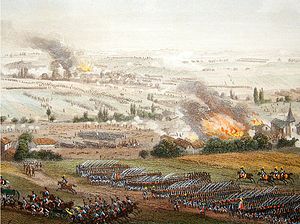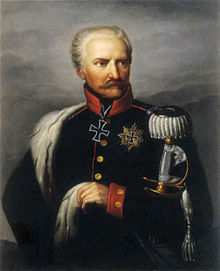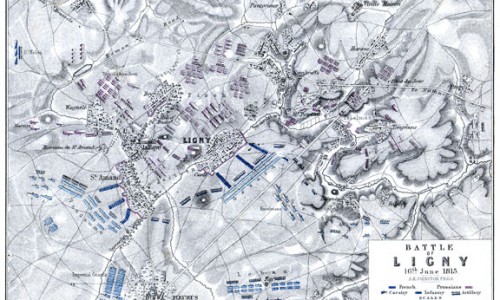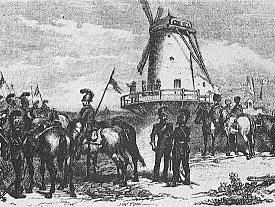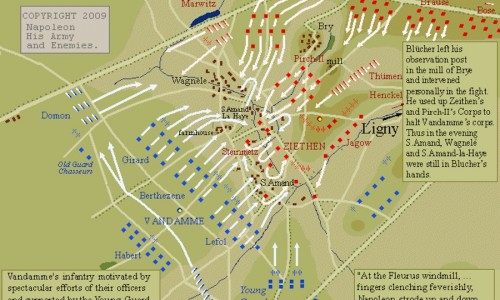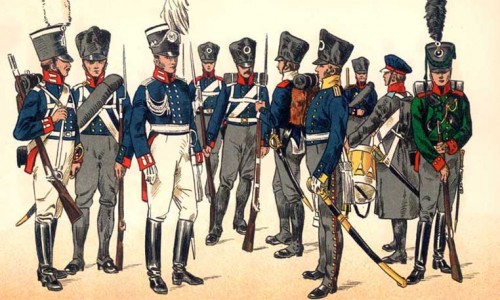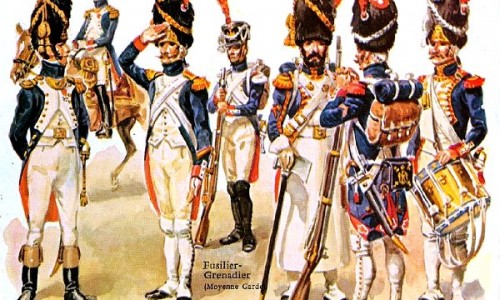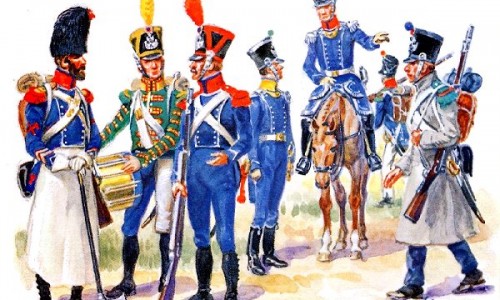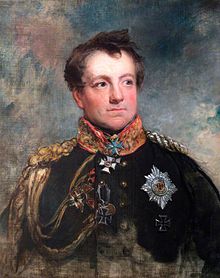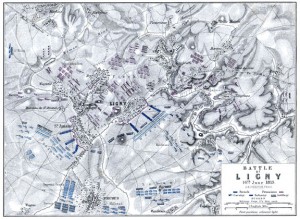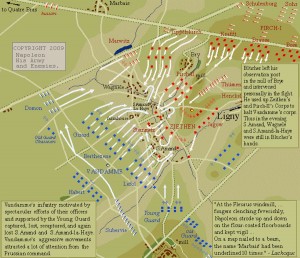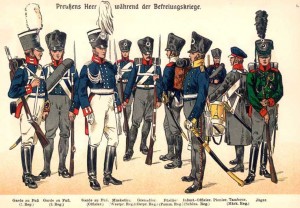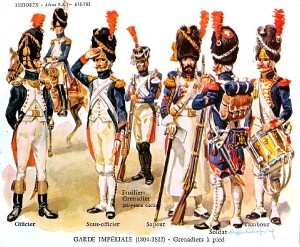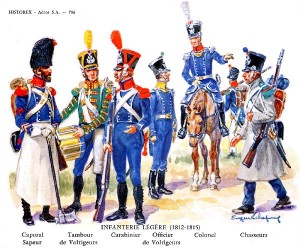By: Paul Fish DVM, Designer of “Black Eagles Over Belgium”
June 16, 1815
Most everyone knows Napoleon was defeated at Waterloo. Very few realize that his last victory, 2 days before, lead to his ultimate defeat. Early on the morning of June 15, 1815 the forces of France under the command of their Emperor Napoleon crossed the River Sambre and entered Belgium.
The area just north of the Sambre was held by the Prussian I Corps commanded by Gen. Ziethen. (The Battle of Ligny, the largest of the 3 battles fought between the French and the Prussian will be portrayed in Black Eagles Over Belgium by Legion Wargames.) Ziethen’s outposts in and around Charleroi were lightly defended as I Corps had been ordered to conduct a fighting retreat.
Napoleon had planned to engage the Prussian forces north of Charleroi and defeat them badly enough that they would retreat all the way back to their base in Liege or perhaps even to the Rhineland. He felt that he could then turn and attack the British, Dutch and Belgium forces near Brussels and take that city as well.
However, right from the start things did not go well for the French. On June 14th, French deserters reported to the Prussians that Napoleon was set to move on the morning of the 15th. Gneisenau then issued orders from the Prussian headquarters in Namur for II, III and IV Corps to mass their regiments and move westward. Ziethen’s I Corps was to hold its position and guard the river line along the Sambre.
At 2:30 am the first of the French horsemen crossed the river and advanced into the uncertainty of the Belgium countryside. The sky lightened at 3:45 am, with mist and light rain, shortly after which the first shots were fired as the French cavalry pushed up against enemy outposts.
Even so, the French were having continuing problems with coordination due to a multiple of causes: first, a courier bringing the movement orders for III Corps had fallen from his horse and broke a leg and second, French infantry officers complained that the tracks that did exist were reserved for the artillery and the cavalry (and so forcing the poor French foot soldiers to march through muddy fields.) This caused Napoleon’s infantry to become separated from his faster moving units. To make matters worse, Prussian skirmishers clashed with the advancing French, further slowing their progress.
However, by 11:00 am, the Imperial Guard sappers and marines finally arrived at Charleroi. They found the bridge over the River Sambre intact and stormed across. Apparently, the Prussian engineers assigned the task were unable to destroy the bridge due to a lack of time and equipment.
Unfortunately for Napoleon, the large number of French troops arriving at this lone bridge soon caused a traffic jam, which forced the Emperor to send one Corps further down river to find another crossing.
In any event, the entire French army somehow managed to get across by late in the afternoon of June 15th.
Napoleon then split his force into two wings; the Left Wing under Marshal Ney was to advance to Quatre Bras and the Right Wing under Marshal Grouchy was to march to Sombreffe.
On the north side of the river Blucher learnt of Napoleon’s advance by 9 am and began to concentrate his army around Sombreffe, which lies 11 miles northeast of Charleroi. Fortunately for him, Ziethen’s I Corps was doing its job of delaying the French, which allowed the rest of his army time to concentrate.
Although the French plan was to move fast to take Quatre Bras that evening and then march on to Brussels in the morning, Ney’s moved so slowly that he had to halt for the day a few miles south of Quatre Bras.
That night found Napoleon in Charloi, Blucher in Sombreffe and Wellington in Brussels.
Wellington first heard of the fighting between Ziethen’s troops and the French at about 5 pm while he was dining with the Dutch Prince of Orange. (Both men were planning to attend the Duchess of Richmond’s Ball that evening.)
Over the course of the next 2 hours, conflicting reports arrived at their headquarters, although Wellington did not move his army eastward to support the Prussians (he did, however, order his men to muster for movement in the morning). Unfortunately, these orders failed to cover the Charleroi-Brussels Road. Therefore, if Ney had followed his directions he might have found the crossroad town of Quatre Bras unguarded.
Although, fortunately for the Allies, two Dutch generals, Jean-Victor de Constant-Rebecqu and Henri-Georges de Perponcher, seeing the importance of the crossroads, ignored Wellington’s 7:00 pm orders to concentrate the 2nd Dutch-Belgium Division at Nivelles and instead moved them to Quatre Bras. In consequence, when Ney did advance to the crossroads in the morning he found the Dutch-Belgium troops there to oppose him.
In addition, Blucher and the Prussians also made good use of the time they had before the battle began. Blucher and Gneisenau had decided on the 14th that an attack was coming at any moment. They, therefore, ordered their army to begin its concentration toward the town of Sombreffe, which had been picked in May as the place to hold off the French if they crossed at Charleroi. As Ziethen’s I Corps had successfully fought its delaying action, the bulk of the other Prussian Corps reach Sombreffe in time, while Ziethen spent the night of the 15/16th just north of Fleurus.
In the early morning of June 16, 1815. Ziethen’s Chief of Staff, Lieutenant-Colonel Ludwig von Reiche, had asked Gneisenau to withdraw his troops to a position north of Ligny brook, although Gneisenau had refused the night before to allow this same move.
However, that morning, with Blucher in attendance the 3 men finally agreed to the move behind the brook, which was to act as natural obstacle to any French advance and by 5:00 am I Corps was finally in position north of the Ligny brook.
As for the French, their outposts had reported the movement of Prussian troops heading toward the villages of Ligny, Brye and St Amand and Grouchy had passed this information to Napoleon at Charleroi
The Prussian headquarters now reviewed the deployment of its troops. I Corps had secured the river line near the village of Ligny. II Corps and III Corps were approaching the villages of Ligny and Wagnelee from the north. However, IV Corps was not in Hannut, as it had been ordered, but still near Liege some 50 miles away. Although Gneisenau had ordered Bulow to move his Corps out of Liege 2 days earlier, Bulow had felt Gneisenau was his junior in both rank and experience, and thus he disregarded the urgency of the order and move slowly.
The order had read:
“I have the honour humbly to request your Excellency to be kind enough to concentrate the IV Corps under your command tomorrow, the 15th, at Hannut, in close cantonments. Information received makes it more and more probable that the French army has concentrated against us and that we must expect from it an immediate change to the offensive… Your Excellency had doubtless better make Hannut your Headquarters.”
Blucher had been asleep a the time the order was written and had therefore not signed it. Thus, Bulow was upset at having to move his men based on an order from a junior officer. He then delayed his departure from Liege until the morning of the 16th and was not be able to join the rest of the Prussian army until the middle of the 17th of June. (Figure 3 gives the positions of the two armies by 3:00 pm on the 16th. This is the starting position for the battle in Black Eagles Over Belgium.)
Napoleon believed that his lighting stroke of the 15th had surprised his enemies and forced them to retreat along their respective lines of communication back into Holland. At this point he had two goals. First, he intended to occupy Brussels and secure the rest of Belgium for the French. Second, he wanted to inflict as much damage as possible on the two opposing armies. In effect, Napoleon was following his ‘divide and rule’ strategy.
To accomplish all this he needed to seize the vital Nivelles-Namur Road. This road provided lateral communications between his two wings at Quartre Bras and Sombreffe. Through his Chief of Staff, Marshal Soult, Napoleon issued orders to the commanders of the two wings, Marshals Ney and Grouchy for the seizure of this road. Grouchy was told that Napoleon himself would join the army at Fleurus.
“If the enemy (Prussians) are at Sombreffe, I want to attack them there; I also want to attack the enemy at Gembloux and take this position, my intention being, after I have occupied these two positions, to leave this same night and move my left flank, under Marshal Ney’s command, against the English.”
Between 6:30 and 8:00 am, Napoleon had received two messages from Grouchy indication that massed Prussian troops were near Sombreffe. However, Napoleon was under the impression that these men were only the rearguard of the Prussian army. He apparently felt that Blucher would not risk a battle in front of Sombreffe as he would be too close to the main body of the French army.
At this time, the French units were spread out between the River Sambra and Fleurus. The cavalry of Pajol and Exelman were just to the south of Fleurus along with the infantry of Vandamme’s III Corps. Gerard’s IV Corps and Milhaud’s cuirassiers were still on the far side of the river, with the Imperial Guard massed near their Emperor at Charleroi. At 9:30 am Napoleon departed to join Grouchy at Fleurus, although he left Lobau’s VI Corps at Charleroi to act as a reserve for either wing of the army.
There was also a short, sharp fight in the town of Fleurus as Prussian 6th Uhlans entered it from the north and the French entered it from the south. French sharpshooter then forced the Uhlans back out of the town. However, covered by the 5th Dragoon and Nieman remaining units the Uhlans together with their 2 cannons made it safely back to the Ligny brook and crossed to the north side.
The French then made slow progress north of Fleurus. Girard’s division, detached from Reille’s II Corps, served as their left flank. Vandamme’s III Corps was in the center and two cavalry corps were on the right.
At about this moment, Napoleon had his sappers build a platform around the Naveau windmill. (See figure 4), which enabled him to see the entire battlefield from its height.
All morning while the Imperial Guard marched north to Fleurus, the Prussians gathered at Sombreffe.
The Prussian Corps of both Pirch and Theilmann had arrived to reinforce Zeithen and by 2:00 pm all of the troops were in place for the coming battle.
As for their commanders, on the Prussian side of the field a meeting had just taken place between Blucher and Wellington at Bussy Windmill. The Duke, his ADC Colonel Alexander
Gordon and several orderlies had accompanied Baron Muffling, the Prussian liaison officer attached to the Duke’s army, to the meeting. Lieutenant-Colonel Reiche observed later that as the Duke and Blucher peered at the French formations, they were able to see Napoleon looking back at them with his field glasses. “Perhaps,” mused Reiche, “perhaps the eyes of the three greatest commanders of the age had their eyes directed on one another.” This meeting was conducted in French, as it was the only language common to all of the commanders. Although accounts of it vary, depending on whose version was being quoted, it is generally believed that Wellington promised support for the Prussians later in the day. With this support, Blucher felt ready to take on the French forces at Ligny.
Their plans were to have both Wellington and Blucher engage the enemy at 3:00 pm. It was hoped that by 4:00 pm or 4:30 the English would send troops to aid the Prussians and squeeze the French between them.
Blucher deployed Pirch’s II Corps on the right flank defending La Haye and St Amand, Ziethen’s I Corps in the center defending Ligny, and Thielmann’s III Corps on the left flank defending Tongrenelle and Tongrinne. At 3:00 pm the battle began with 83,000 Prussians and 224 guns separated by a shallow valley and a narrow stream from 63,000 Frenchmen and 230 guns.
If you want to play out the rest of the battle and see if the Prussians can hold on to the villages along the river line, you need to order the game: Black Eagles Over Belgium from Legion Wargames.com. The preorder price is $41 while the regular price will be $56. The game will contain the rules for Ligny, Wavre, and Plancenoit. It will also have a campaign version where you can play all three battles consecutively and move from one to the next. The game has 2 optional “What If” events, what if Napoleon remembered to call Lobau to reinforce him or what if Bulow obeyed his orders and had been nearer to Sombreffe when the fighting began.


